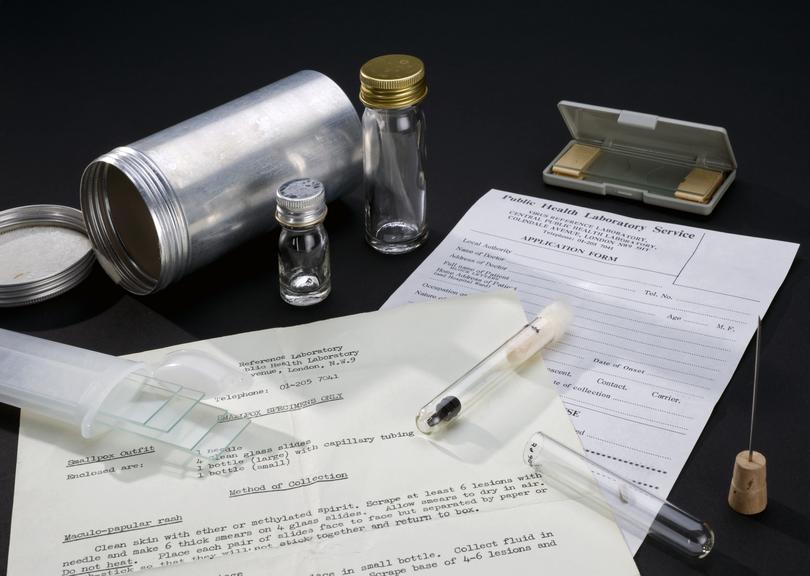Part of smallpox diagnosis kit
Sharp metal point with cork topper in a glass tube cover from smallpox diagnosis kit for collecting samples from suspected British cases of smallpox, for identification at the Central Public Health Laboratory, 1970-1979
More
Early diagnosis of smallpox is one way of helping to prevent the spread of the disease. This kit was used by doctors in general practice surgeries and by school nurses. Samples were taken from skin complaints, including rashes, pustules and scabs which may have been consistent with a stage in the development of smallpox. Any fluid from the skin was collected using the rubber teat and capillary tubes.
The samples were sent by post to the Virus Reference Laboratory at the Central Public Laboratory in London. It could take anywhere between two and 72 hours for the results of any tests to be known.






